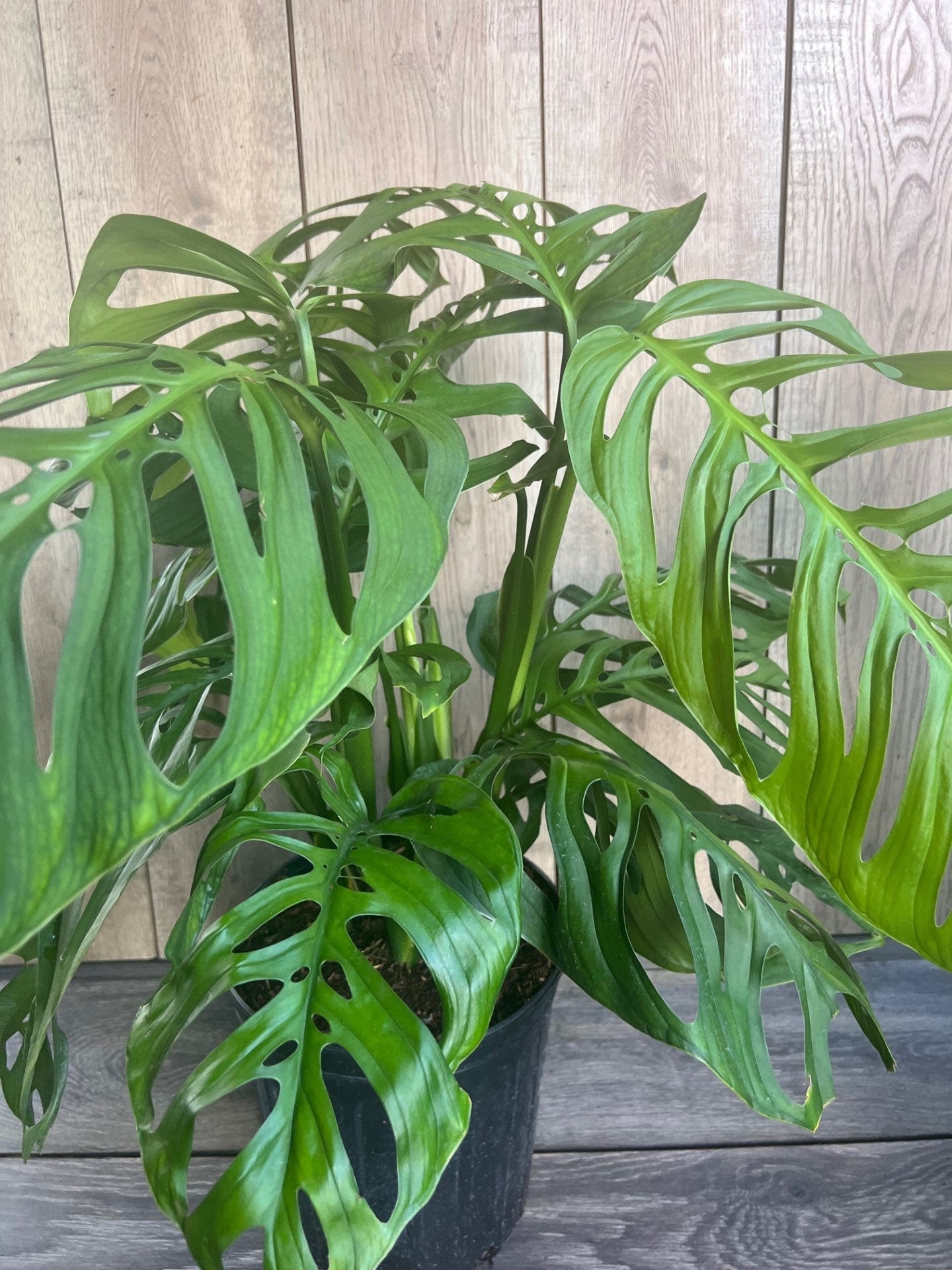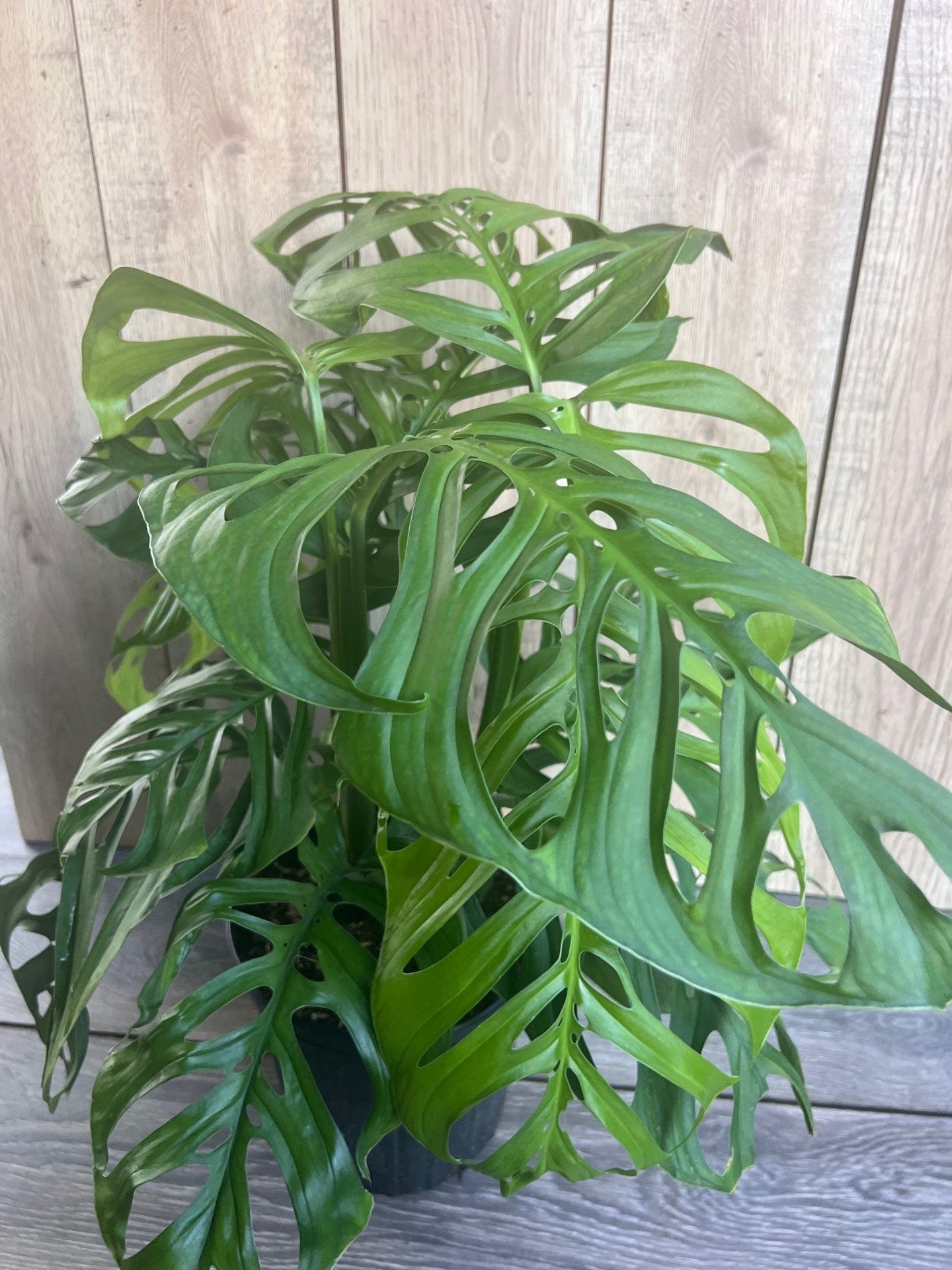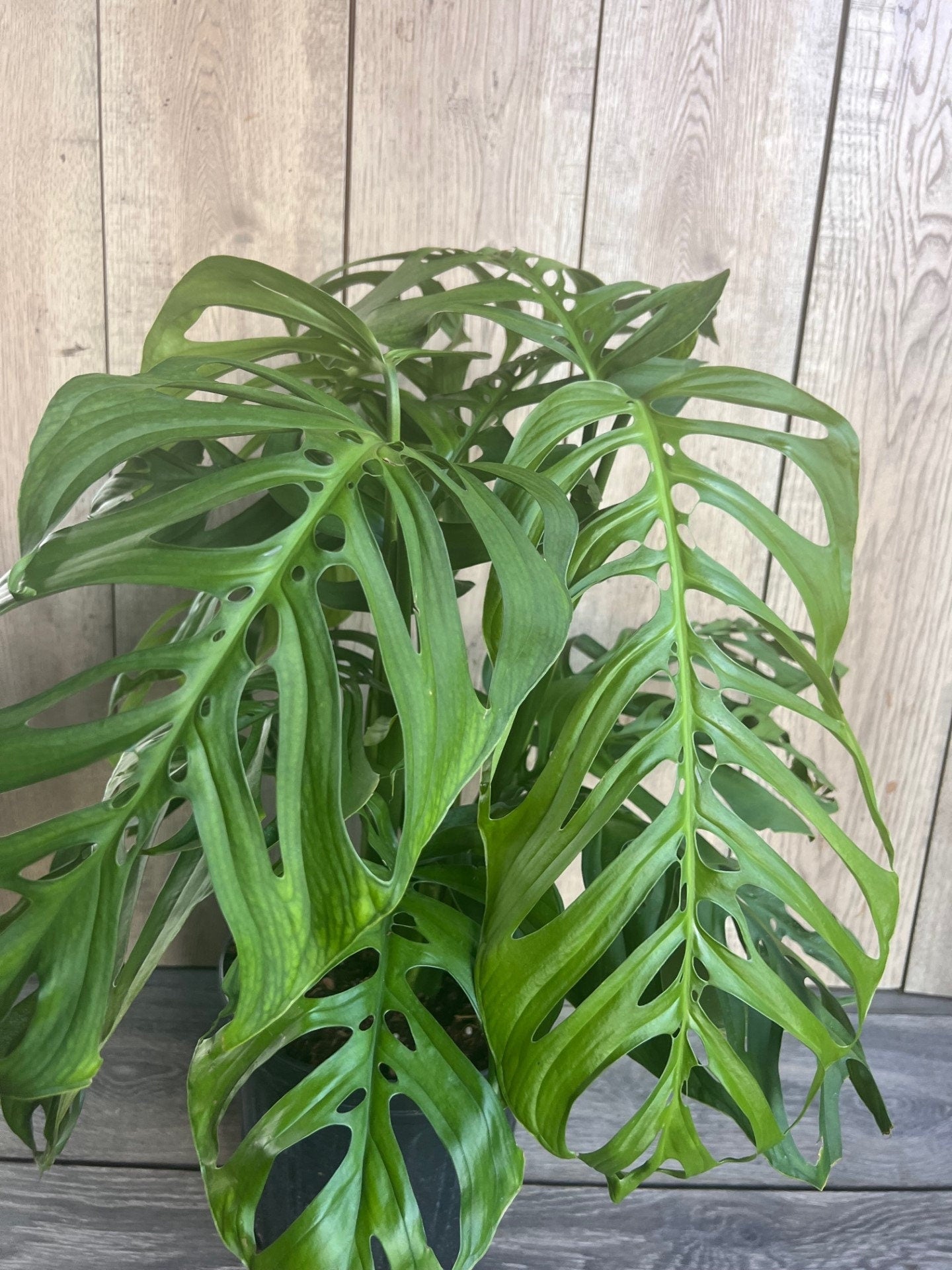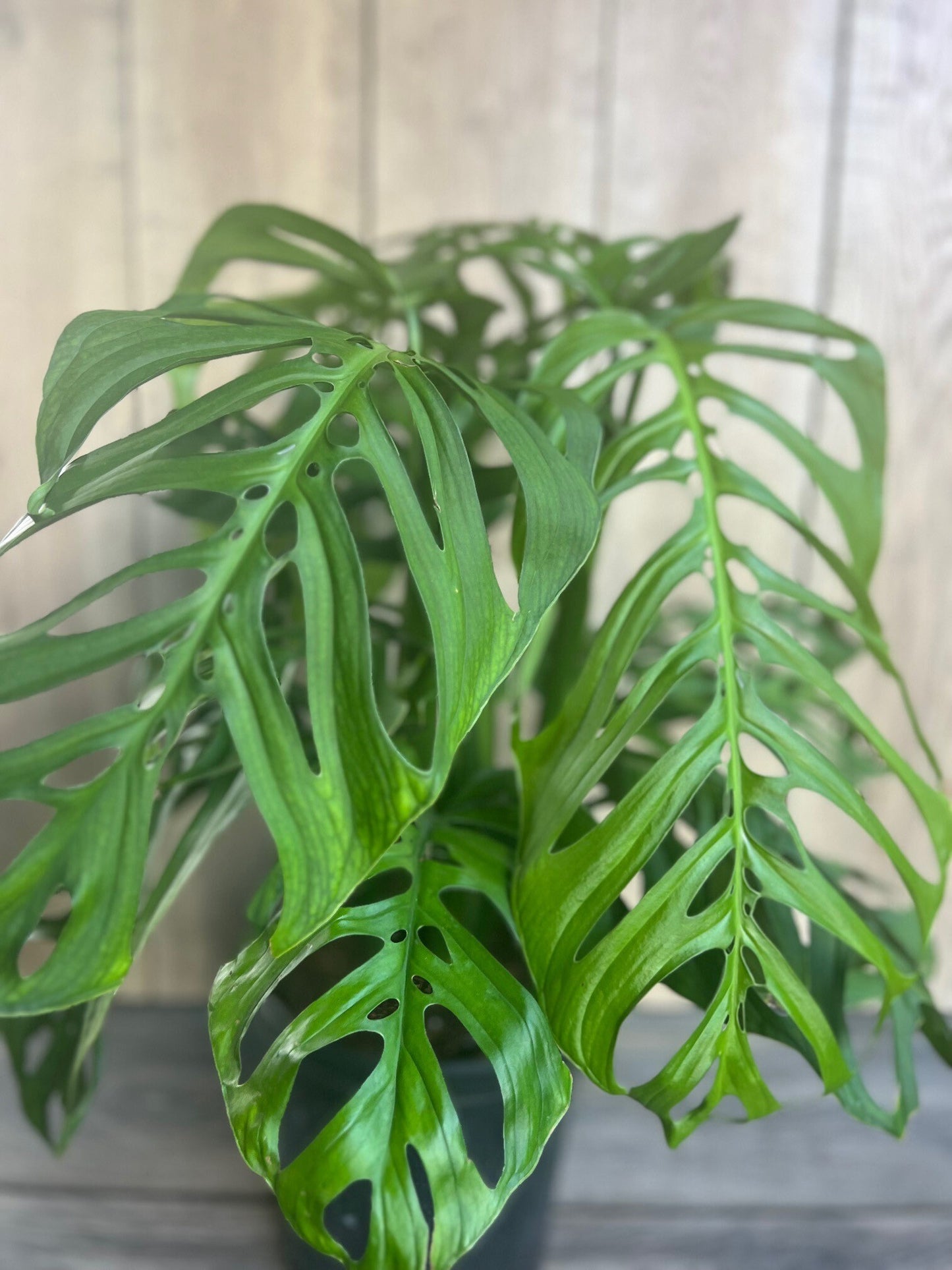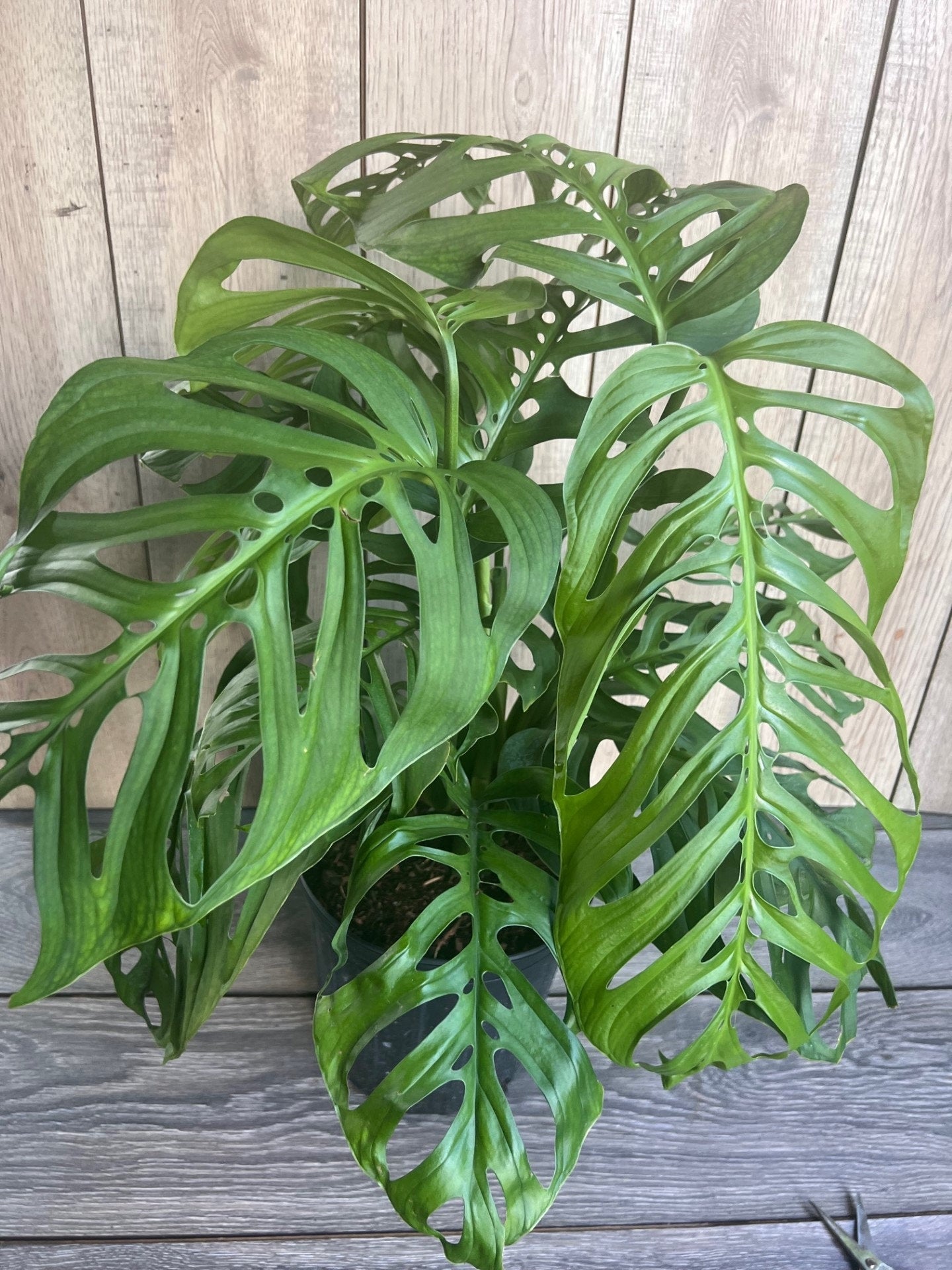Monstera esqueleto, epipremnoides, 10” Pot
Monstera esqueleto, epipremnoides, 10” Pot
Couldn't load pickup availability
Note: You will receive 1 large Monstera Esqueleto in 10" pot similar to the pictures
Monstera Esqueleto (Monstera adansonii 'Esqueleto') is a visually striking variety of the Monstera adansonii, known for its intricate, skeleton-like leaves with long, narrow fenestrations (holes). This vining tropical plant is admired for its dramatic, airy leaf pattern, which gives it a unique and almost skeletal appearance. Native to tropical regions, Monstera esqueleto is a popular choice among houseplant enthusiasts due to its distinctive foliage and relatively easy care.
Care Guide for Monstera Esqueleto
1. Light Requirements
- Bright, Indirect Light: Monstera esqueleto thrives in bright, indirect light. Direct sunlight can scorch the leaves, causing browning or fading. Place the plant near a window with filtered light, or use grow lights indoors if natural light is insufficient.
2. Temperature
- Warm Temperatures: Monstera esqueleto prefers temperatures between 65°F to 85°F (18°C to 29°C). Avoid placing the plant in areas with drafts or near heaters or air conditioners, as temperature fluctuations can stress the plant.
3. Watering
- Moderate Watering: Water when the top 1-2 inches of soil feel dry. Ensure the pot has good drainage to prevent water from pooling at the bottom, as this can lead to root rot. Reduce watering in the winter months when the plant's growth slows down.
- Humidity: Monstera esqueleto thrives in high humidity (60-80%). If the air is dry, use a humidity tray, humidifier, or mist the leaves occasionally to maintain moisture levels around the plant.
4. Soil
- Well-Draining, Aerated Soil: Use a well-draining, peat-based potting mix with added perlite or coco coir for improved aeration and drainage. A tropical plant or Monstera-specific mix works well. Avoid soils that retain too much moisture, which can cause root rot.
5. Fertilizing
- Feed During Growing Season: Fertilize Monstera esqueleto every 4-6 weeks with a balanced, liquid fertilizer diluted to half strength. A fertilizer with an NPK ratio of 10-10-10 or one formulated for houseplants is ideal during spring and summer.
- Reduce Fertilization in Winter: Cut back on fertilization during fall and winter when the plant's growth slows.
6. Pruning and Maintenance
- Pruning: Prune to control size and shape, especially if the plant becomes leggy or overgrown. Pruning encourages branching and fuller growth. Trim vines to the desired length, and propagate the cuttings in water or soil.
- Cleaning: Wipe the leaves with a damp cloth to remove dust, allowing the plant to photosynthesize more efficiently.
7. Support for Climbing
- Trellis or Moss Pole: As a vining plant, Monstera esqueleto benefits from support structures like a moss pole or trellis. This encourages the plant to grow upwards and produce larger, more fenestrated leaves. If space is limited, it can also be grown as a hanging plant with vines cascading downward.
8. Repotting
- Every 1-2 Years: Repot your Monstera esqueleto every 1-2 years or when the plant outgrows its current pot. Choose a pot 1-2 inches larger in diameter than the current one to give the roots more space to grow.
- Check for Root Rot: When repotting, inspect the root system for signs of rot (yellowing leaves, mushy roots). Trim away unhealthy roots and use fresh, well-draining soil.
9. Pests and Problems
- Common Pests: Monstera esqueleto can be susceptible to pests such as aphids, spider mites, mealybugs, and scale. Regularly inspect the leaves for pests and treat with neem oil or insecticidal soap if necessary.
- Leaf Damage: Brown tips or edges can indicate low humidity, overwatering, or salt buildup from fertilizers. Monitor the plant for signs of stress and adjust care accordingly.
10. Propagation
- Stem Cuttings: Propagate Monstera esqueleto by taking stem cuttings that include a few leaves and at least one node (a small bump from which roots or new growth can develop). Place the cutting in water or directly in soil, ensuring the node is submerged. Keep the cutting in a warm, bright area until roots develop, typically in a few weeks.
Summary
Monstera esqueleto is a stunning and relatively easy-to-care-for houseplant that brings a unique, skeletal appearance to any space. It thrives in bright, indirect light, warm temperatures, and high humidity, requiring moderate watering and well-draining soil. Regular pruning, occasional cleaning, and support for its climbing vines will help the plant grow strong and healthy. With proper care, Monstera esqueleto will reward you with its beautiful, intricate foliage and distinctive vining growth, making it a standout addition to any indoor garden.
Share
